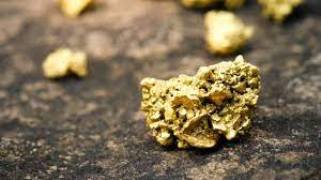Will Bihar become the new El Dorado? Will Jamui be the Kolar Gold Field of the 21st Century? What’s the buzz?
Just a few days ago, the Bihar government decided to allow the mining department to start the exploration project of gold in Jamui district, South Bihar. The news obviously comes as a surprise to the average Bihari, since Jamui district is one of the most backward regions in the state.
In fact, the buzz began about Bihar’s estimated gold reserves last year. Union Minister of Mines Pralhad Joshi had shared a written statement in the Lok Sabha that Bihar holds the highest share of India’s gold reserves.
The Indian Minerals Yearbook says the Bihar has 44% of India’s gold reserves.
On the face of it, Biharis are sitting on almost 40 tonnes of the precious metal. So, what’s the catch?
A report in The Times of India says that the last survey , conducted by the Bihar Government was from 1982 to 1991. The GSI was also involved for a year. The results weren’t very encouraging.
Sanjay Kumar Dutta, deputy director general of Geological Survey of India (GSI) Patna branch has stated that the grade of ore in Jamui as per the last survey was 0.17 ppm, (PPM stands for parts per million). This means that 0.17 grams of gold is present per tonne of ore or stone. The minimum standard for carrying out underground mining for gold is 2ppm. 2 ppm means that there will be 2 grams of gold per tonne (around 1000 kg) of ore and stone.
According to a Geological Survey of India (GSI) survey, around 222.88 million tonnes of gold reserve, including 37.6 tonnes of mineral-rich ore, are present and can be found in Jamui district. Media reports say that a GSI team had last visited the area to conduct a survey in 2015; the team stayed at the Sono block headquarters for several months after which it submitted its report to the Union government.
“The state Mines and Geology Department is consulting with agencies; GSI and the National Mineral Development Corporation (NMDC), for exploration of gold reserves in Jamui. The process of consultation started after analysing the GSI findings which indicated the presence of gold in areas such as Karmatia, Jhajha and Sono in Jamui district,” according to Additional Chief Secretary cum Mines Commissioner Harjot Kaur Bamhrah.
She added that the State government is likely to sign an MoU with a Central agency or agencies for G3 (preliminary) stage exploration within a month’s time.
In certain areas, G2 (general) exploration can also be carried out, Ms. Bamhrah said.
What is G1,G2,G3 ? – The exploration for any mineral deposit involves four stages: reconnaissance survey (G4), preliminary exploration (G3), general exploration (G2) and detailed exploration (G1). G2-level exploration’s objective is to establish the main geological features of a deposit and provide an initial estimate of size, shape, structure and grade of the mineral in the mine.
What is the ecological cost of the Gold Mining?
ENVIRONMENTAL CONCERNS (from Page 21 – Indian Minerals Yearbook 55th edition – GOI publication- final release year: 2018)
Gold is recovered from ores by two main methods, both of which affect environment.
Earlier, for recovery of gold, amalgamation processes were used in which ore was mixed with mercury that selectively dissolved gold which was then recovered by evaporation. Mercury from these operations was never recovered and remained as pollutant in many old mining areas.
The cyanide process is based on the property of precious metals in forming soluble complex ions with cyanide anion. Cyanide does not dissolve quartz, iron oxides and other common gangue minerals and yields a relatively simple gold- bearing solution known as pregnant solution. In some gold mines, gold is dissolved from the ore by crushing and grinding followed by mixing with cyanide solution in large vats.
Cyanide is a highly toxic compound and requires special handling. During ore treatment, pH of cyanide solution must be kept at about 11 to prevent cyanide from reacting with hydrogen ion to produce HCN, a deadly gas. Although less toxic substitutes of cyanide are known, it is not yet clear whether such substances will be cost effective or environment-friendly.
PREPARED BY NEWSNET DESK WITH INPUTS FROM HARSHIT PAUL


